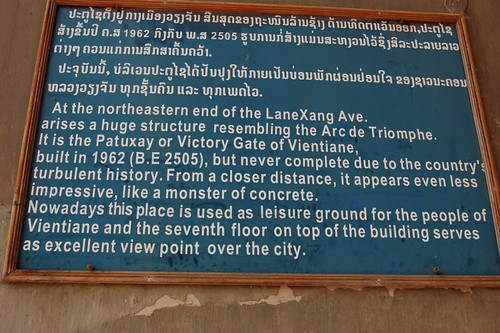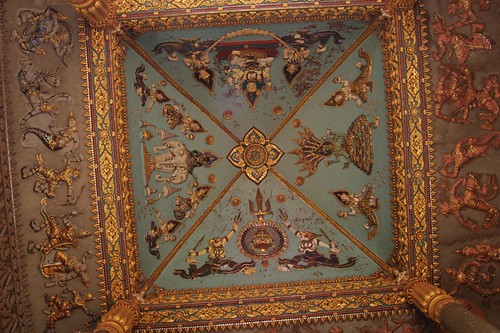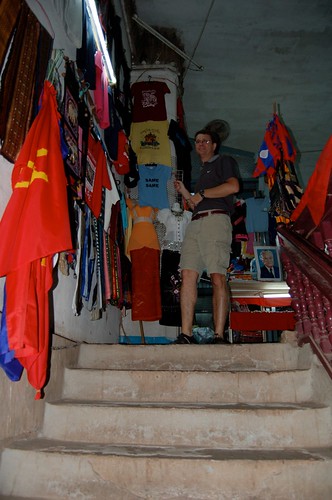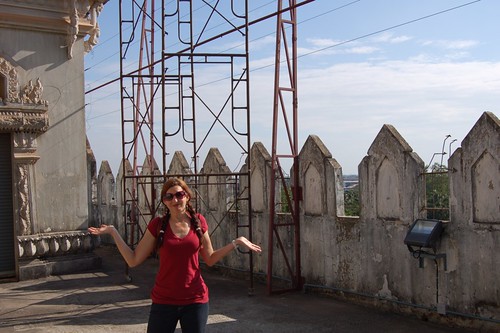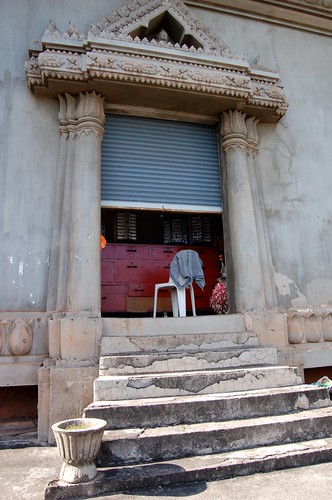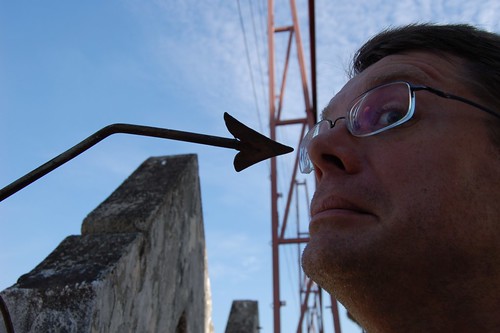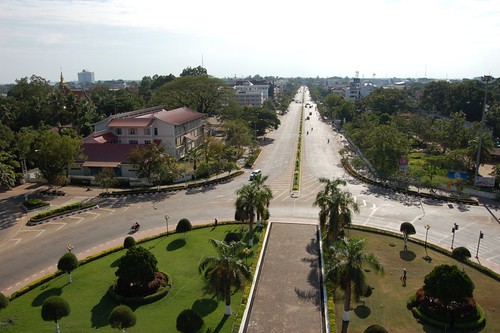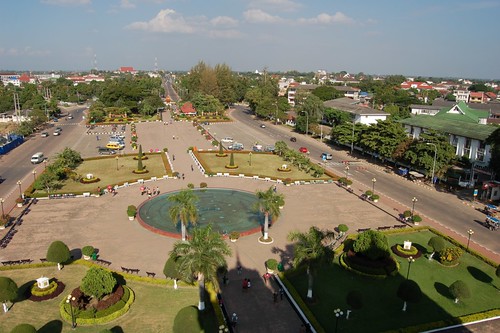I realized this morning that I haven’t posted anything in about a week. That’s because I haven’t DONE anything. Well, I haven’t done anything INTERESTING.
Parent-teacher conferences … yawn.
Professional development workshops on the Primary Years Program … snore.
Mind-numbing exploration of the library’s teacher resources section in a futile attempt to find some ESL materials … snort, stretch, roll over.
Yeah, it’s all been about school lately. Sorry.
That’s why I decided we were going to do a little sightseeing on this beautiful sunny Sunday afternoon. Tony and I jumped on the motorbike and headed across town to the Patuxai Monument. Also spelled Patuxay (and pronounced Patoo-sigh), the name translates roughly to Gate of Victory, which is close to “Arc de Triomphe,” so the locals often refer to the boulevard leading to the monument as the Champs Elysee.
(No, I’m not wearing a ping-pong-ball hat. That’s a street lamp.)
Construction began in the early 1960s, and workers officially finished the job in 1969 using concrete donated by the United States for a new airport. Intended to honor Lao people who lost their lives in war, the monument is powerfully impressive from a distance. Not so much up close. You don’t need to read the sign to see that.
Draped in lights, the monument looks a bit shabby by day (much prettier at night!).
Stepping under the arch, we could see the colorful ceiling with lots of Lao motifs.
For just 3,000 kip (35 cents), you can climb to the top. So we did. On the way up, we had plentiful shopping opportunities as vendors sleepily displayed “Same Same” T-shirts and other souvenirs.
The rooftop was pretty disappointing with chipped concrete, broken steps, cracked walls, and big pieces of debris. We met another American up there who thinks the monument’s condition is an intentional political statement about the way the U.S. treated Laos during the Vietnam War. Maybe. Or maybe not.
Tony was nearly impaled on this rusty ornamental arrow!
Here’s a view looking toward the Mekong River (with Thailand on the other side).
Here’s a view looking inland. This park is lovely and well maintained, so locals hang out by the fountains to enjoy ice cream or spicy noodles.
Final verdict: Enjoy the monument from the outside!


